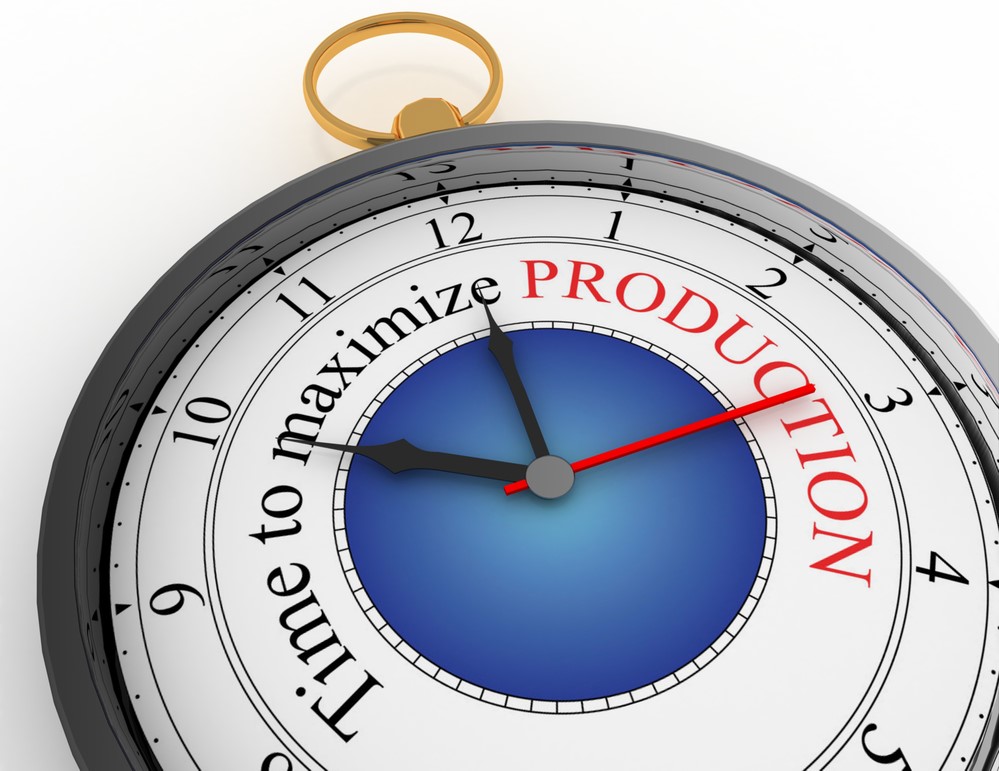
Maximizing Production

Your employees come in every day and work hard. As you look out into the workspace, things seem to be moving along. Everyone is hustling and bustling to get the job done.
But is it truly productive? Has the workflow been maximized to peak production levels?
Maybe it’s time to evaluate and make some changes. Let’s begin . . .
Analyze Your Current Workflow
You don’t know what you don’t know. So, make sure you know it.
- Are the right people in the right places?
- Is the process efficient, or is there an excess of downtime?
- Is your equipment and technology up to date and in optimum shape?
- Where are the bottlenecks that stop up production?
Ask specific questions about numbers, both in losses and in gains. You can’t create an effective plan without a crystal-clear understanding of what is (or isn’t) happening. Talk with your work team. If they are the ones in the production line, they probably have a pretty good idea of any potential glitches. Habitually reassess the workflow.
Evaluate Equipment
Broken, run-down equipment is not only unsafe, but it can hold up production. Valuable time is wasted, not to mention the cost of preventable repairs or the need to purchase new.
- Have a team set in place to be on the lookout and to troubleshoot equipment and technology needs as they occur.
- Train employees on proper care and usage of all equipment they operate.
Optimize Your Inventory
Discovering that harmonious balance between supply and demand is a process. It can take time and involve lots of variables. But mastering the beast called Inventory Management is essential to efficient productivity.
- Use a management solution with real-time data
- Start monitoring the frequency of your turnover – the shorter the turnover, the more quickly it turns into liquid cash assets.
- Track your whole supply chain. Know how long it takes for you to get products in and create deadlines for ordering.
- Build contingencies for pipeline inventory
- Regularly re-evaluate supply-chain components like manufacturers and logistics
- Set a benchmark – you can’t plan for the exception in sales, you must plan for the status quo.
It’s important to remember that inventory is money that you have spent, but for which you haven’t received anything back. The longer it sits on your shelves or in your warehouse, the longer it takes you to earn back your investment.
Get Yourself Organized
A critical factor in streamlined production is organization. Practical. Logistical.
- De-clutter by getting rid of unused, unnecessary tools and supplies.
- Keep task lists for your whole team.
- Develop tighter storage methods.
- Design efficient layouts – ensure your floor plan matches the pattern of the workflow.
- Plan transfers of stock between low-demand and high-demand warehouses.
- Effectively utilizing space will allow you to take advantage of supplier discounts by ordering larger quantities of stock at appropriate times.
- Streamline the paper trails.
- Implement Toyota’s Seiri and “sort tools, parts, and instructions by their necessity (needed or needed.)”
During the upheaval of the COVID-19 pandemic, your workflow and business have probably changed significantly. However, adjusting the workflow, continuing to maintain the equipment, faithfully monitoring inventory, and staying organized are principles that can be applied no matter what your employee level is.
Yes, it’s a difficult time, but the ERG Staffing team understands. We’ll do all we can to help you. Whatever you need, whether it is temporary assignments, temp-to-perm, on-site services, payrolling employees, or direct hire, ERG Staffing offers flexible partnership models to meet your unique needs. We take care of the headaches of recruiting and hiring, so you can focus on your business. Contact us today.
